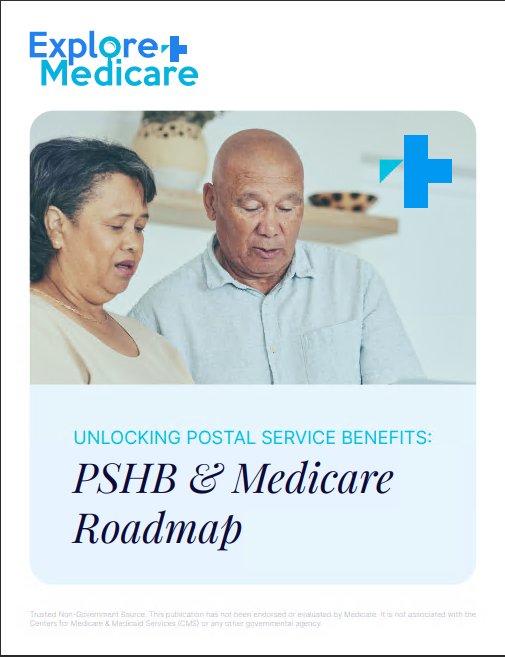Key Takeaways
-
Medicare Open Enrollment is a yearly opportunity to adjust your Medicare coverage, ensuring it fits your health and financial needs for the upcoming year.
-
Understanding the key deadlines, changes, and options during Open Enrollment can save you money and improve your healthcare experience.
What Is Medicare Open Enrollment?
Medicare Open Enrollment is a yearly period from October 15 to December 7, during which Medicare beneficiaries can review and make changes to their coverage. Whether you’re looking to switch plans, add coverage, or adjust your benefits, this is the time to take action. Any changes you make during this window take effect on January 1 of the following year.
This period is essential because it allows you to adapt your plan to changes in your healthcare needs, financial situation, or shifts in Medicare policies.
Who Can Participate in Medicare Open Enrollment?
If you’re already enrolled in Medicare, you’re eligible to make changes during Open Enrollment. This includes people with Original Medicare (Part A and Part B), Medicare Advantage (Part C), or Medicare Part D (prescription drug plans).
You might consider participating if:
-
Your current plan no longer meets your needs.
-
Your prescription drug costs have increased.
-
You want to explore Medicare Advantage plans for added benefits like dental or vision.
Even if you’re happy with your current coverage, it’s wise to review your options. Plans and costs can change annually, and you may find a better fit for the upcoming year.
What Changes Can You Make?
During Open Enrollment, you can:
-
Switch from Original Medicare to Medicare Advantage: Medicare Advantage plans bundle Part A, Part B, and often Part D coverage, along with additional benefits.
-
Switch from Medicare Advantage back to Original Medicare: This may be a good option if you’re not satisfied with your current plan.
-
Change Medicare Advantage plans: You can select a different plan that better suits your needs.
-
Join, switch, or drop a Part D plan: Adjusting your prescription drug coverage can save you money and ensure your medications are covered.
You can only make changes during this period unless you qualify for a Special Enrollment Period (e.g., due to a move or losing other coverage).
Why Reviewing Your Plan Is Crucial
Every year, Medicare plans can undergo changes, including:
-
Premiums and deductibles: Costs may rise or fall.
-
Drug formularies: Your current medications might not be covered anymore, or new restrictions might apply.
-
Provider networks: Doctors or hospitals you prefer may no longer be in-network.
-
Additional benefits: Some plans may add or remove perks like dental, vision, or hearing coverage.
Failing to review your plan could mean higher costs or reduced access to care. By taking the time to compare plans, you can ensure your coverage aligns with your current healthcare and financial needs.
How to Compare Your Options
Medicare’s Plan Finder tool is a great resource for exploring available plans. Here’s how to get started:
-
Assess Your Needs: Make a list of your current healthcare providers, prescriptions, and preferred benefits.
-
Gather Information: Review your Annual Notice of Change (ANOC) letter, which details any modifications to your current plan for the upcoming year.
-
Compare Plans: Use the Plan Finder to evaluate costs, coverage, and additional benefits.
-
Double-Check Networks: Ensure your preferred doctors and hospitals are in-network.
-
Estimate Total Costs: Look beyond premiums and consider deductibles, copayments, and out-of-pocket maximums.
Take notes and keep a checklist to narrow down your options.
Key Deadlines You Should Know
-
October 15 – December 7: Medicare Open Enrollment period. Make your changes during this time.
-
January 1: Changes you make during Open Enrollment take effect.
-
January 1 – March 31: Medicare Advantage Open Enrollment Period. If you’re already in a Medicare Advantage plan, you can switch plans or return to Original Medicare during this time.
Staying on top of these dates ensures you won’t miss out on opportunities to optimize your coverage.
Common Mistakes to Avoid
While Open Enrollment is a valuable opportunity, there are common pitfalls to avoid:
-
Not Reviewing Your Plan: Even if you’re satisfied with your current coverage, failing to review could mean unexpected costs or loss of access to preferred providers.
-
Waiting Until the Last Minute: Procrastination can lead to rushed decisions. Start reviewing your options early.
-
Overlooking the Fine Print: Pay attention to changes in premiums, deductibles, and drug formularies.
-
Ignoring Provider Networks: Confirm that your doctors and hospitals remain in-network.
-
Assuming All Plans Are the Same: Medicare Advantage and Part D plans vary widely. Take the time to compare.
By avoiding these mistakes, you can make informed decisions that benefit your health and finances.
Understanding Costs and Budgeting
Medicare coverage costs can vary based on the type of plan you choose. Here’s a breakdown of potential expenses to keep in mind:
-
Medicare Part A: Most people don’t pay a premium, but the inpatient hospital deductible is $1,676 per benefit period in 2025.
-
Medicare Part B: The monthly premium is $185 in 2025, with an annual deductible of $257.
-
Medicare Part D: Premiums vary by plan, with a maximum deductible of $590. Be mindful of the new $2,000 out-of-pocket cap on prescription drug costs.
-
Medicare Advantage (Part C): Costs depend on the plan and provider. Look for details on premiums, copayments, and out-of-pocket maximums.
Budgeting for healthcare involves considering not only premiums but also deductibles, copayments, and unexpected expenses. Use the Medicare Plan Finder to estimate your total yearly costs.
The Importance of Prescription Drug Coverage
Prescription drug costs can be a significant part of your healthcare expenses. Medicare Part D plans and many Medicare Advantage plans offer this coverage, but formularies and costs can change annually.
During Open Enrollment, review:
-
Your Current Medications: Ensure they are covered under your plan’s formulary.
-
Tier Levels: Check if your drugs have moved to a higher cost tier.
-
Restrictions: Be aware of quantity limits, prior authorizations, or step therapy requirements.
Switching to a more suitable plan could reduce your prescription costs and make accessing your medications easier.
Medicare Advantage vs. Original Medicare
If you’re debating between Medicare Advantage and Original Medicare, consider these factors:
-
Coverage: Medicare Advantage plans often include additional benefits like dental and vision, but they may have more restricted provider networks.
-
Costs: Original Medicare’s costs are straightforward, while Medicare Advantage plans may have varying copayments and maximum out-of-pocket limits.
-
Flexibility: Original Medicare allows you to see any provider that accepts Medicare, while Medicare Advantage plans typically require you to stay in-network.
The right choice depends on your healthcare needs, budget, and preferences.
How to Get Help During Open Enrollment
Navigating Medicare can feel overwhelming, but there are resources available to help:
-
Medicare’s Helpline: Call 1-800-MEDICARE for assistance with plan comparisons.
-
State Health Insurance Assistance Program (SHIP): Offers free, personalized counseling.
-
Plan Finder Tool: Use this online tool to explore options and compare costs.
Don’t hesitate to seek guidance. A little help can go a long way in ensuring you make the best decisions.
Wrapping It Up: Make This Year’s Open Enrollment Count
Medicare Open Enrollment is your chance to ensure your coverage works for you in 2025. By reviewing your options, understanding key changes, and avoiding common mistakes, you can save money and improve your access to care. Don’t wait until the last minute—start early, explore your options, and make informed decisions. Your health and wallet will thank you.






